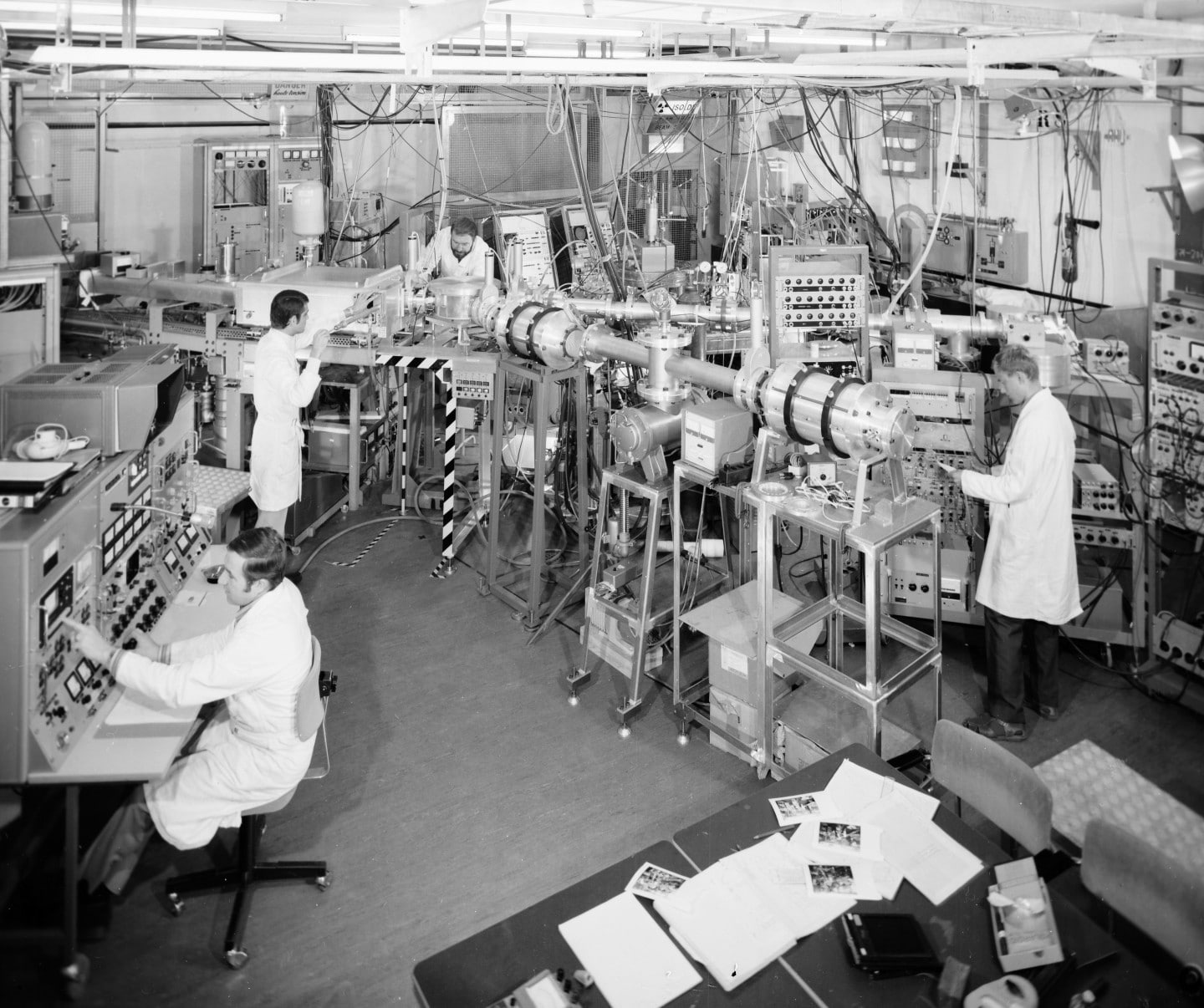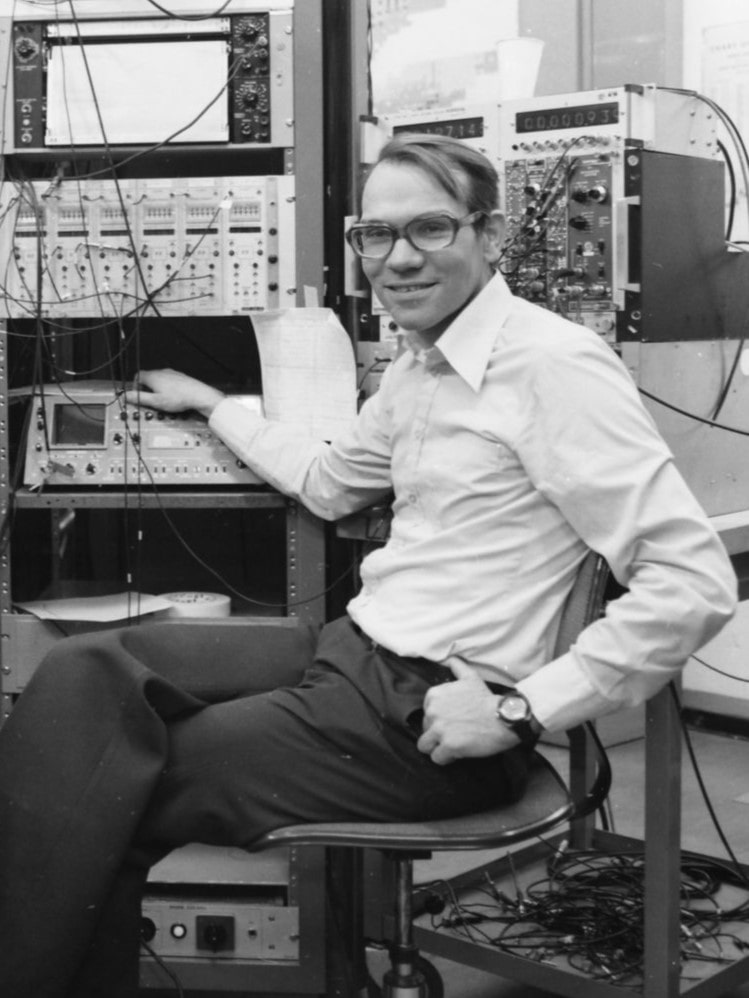CERN70: The nucleus as a laboratory
2 May 2024 · Voir en français
Part 8 of the CERN70 feature series. Find out more: cern70.cern
Helge Ravn was part of the ISOLDE group from the beginning
When ISOLDE began operations at CERN in 1967, it was unique in the world

When the Isotope Separator On-Line (ISOLDE) began operations at the Synchrocyclotron (SC) in 1967, it was unique in the world. Like other laboratories, a proton beam from an accelerator was directed onto a target to create rare radioactive isotopes of various elements on the periodic table. But ISOLDE used an innovative technique to solve the main difficulty: selecting isotopes of interest. Using a combination of chemical and electromagnetic methods, ISOLDE was able to produce radioactive beams of a single isotope.
ISOLDE offered new opportunities for physicists, who could now study previously inaccessible isotope nuclei. This has led to many surprises, such as the unexpected discovery of new regions of deformation in certain nuclei.
By the 1980s, the ISOLDE facility had several hundred users and, to meet demand, a second target station and mass separator was built. When the SC shut down in 1990, ISOLDE's two mass separators moved to the new experimental area at the Proton Synchrotron Booster.
In 2001, the REX-ISOLDE post-accelerator opened up a new era in nuclear physics, allowing studies of the structure of exotic nuclei and simulating nuclear reactions in stars and in interstellar space. In 2018, HIE-ISOLDE completed construction. This additional accelerator now increases the energy of post-accelerated beams to study nuclear reactions of exotic nuclei.
In its almost 60 years of existence, ISOLDE has acquired unique capabilities in the field of radioactive beams. More than 1300 isotopes of more than 70 elements have been used in a wide range of research domains, from cutting-edge nuclear structure studies, through atomic physics, nuclear astrophysics, fundamental interactions, to solid-state physics and life sciences. The ISOLDE facility currently has more than 900 users who perform about 50 experiments per year using 15 different beamline instruments.
Recollections
When ISOLDE was started, it was mainly a Scandinavian undertaking. The nucleus of the CERN Nuclear Chemistry group that hosted ISOLDE was composed of Danes, Swedes and Norwegians and we often joked that the DE in ISOLDE stood for Danish Engineering.
Helge Ravn

Helge Ravn was part of the ISOLDE group from the beginning. He became responsible for the development of the mass separators and their radioactive ion beams, and was later head of the technical group in charge of the ISOLDE facility, before his retirement in 2005.
“At the time when ISOLDE was started, it was mainly a Scandinavian undertaking. The nucleus of the CERN Nuclear Chemistry group that hosted ISOLDE was composed of Danes, Swedes and Norwegians and we often joked that the DE in ISOLDE stood for Danish Engineering.
The first experiments with accelerated radioactive ion beams were done at the Copenhagen institute of Niels Bohr in 1954. The experiments there demonstrated the ISOLDE method as the method for production and study of the radioactive isotopes. The new technique was to use an on-line mass separator, or mass spectrometer, to analyse the complex mixtures of exotic nuclei formed in energetic nuclear reactions.
Normally, the samples had to be carried to a chemical lab after irradiation, where a specific element would be isolated. To do this, one needed very rapid chemistry: a student would run from the accelerator to the chemistry lab. Then to sort the different isotopes of one element, a physical, electromagnetic separation was needed.
We realised that it would be even faster if we could do it all in one rapid and continuous process, by shining the proton beam directly into the ion source of a mass separator, which then of course would have to include a chemical separation step to produce a beam of just one isotope. The time delay between production and detection then became very short: before (with the student running) it was on the order of one hour, now we could discover and study isotopes with half-lives of milliseconds.

After the SC began operating again, following its improvement programme, we had a stable and productive period until about 1979, when questions began to be asked at CERN: Should this programme be continued? Was it worthwhile? The SC was an expensive machine to maintain, both in terms of material and human resources. But the need for a radioactive beam and nuclear physics became very clear and in 1980 I became deputy group leader of the SC, which was now the dedicated driver accelerator for the ISOLDE facility. We further refined the separation techniques in a new second target station associated with a high-resolution mass separator.
Around 1990, a breakthrough came when the physics case for our old dream of post-accelerating the radioactive beams and using them in nuclear reaction experiments became clear. After the closure of the SC, we were allowed to move ISOLDE to a new experimental area at the PS Booster. The techniques developed at ISOLDE were now ripe to be used in a number of upcoming radioactive ion-beam accelerators, both at REX-ISOLDE and worldwide.”
----
This interview is adapted from the 2004 book “Infinitely CERN”, published to celebrate CERN’s 50th anniversary. For more information on the history of ISOLDE, see the "Meet ISOLDE" series published in 2017 to mark the facility's 50th anniversary.
